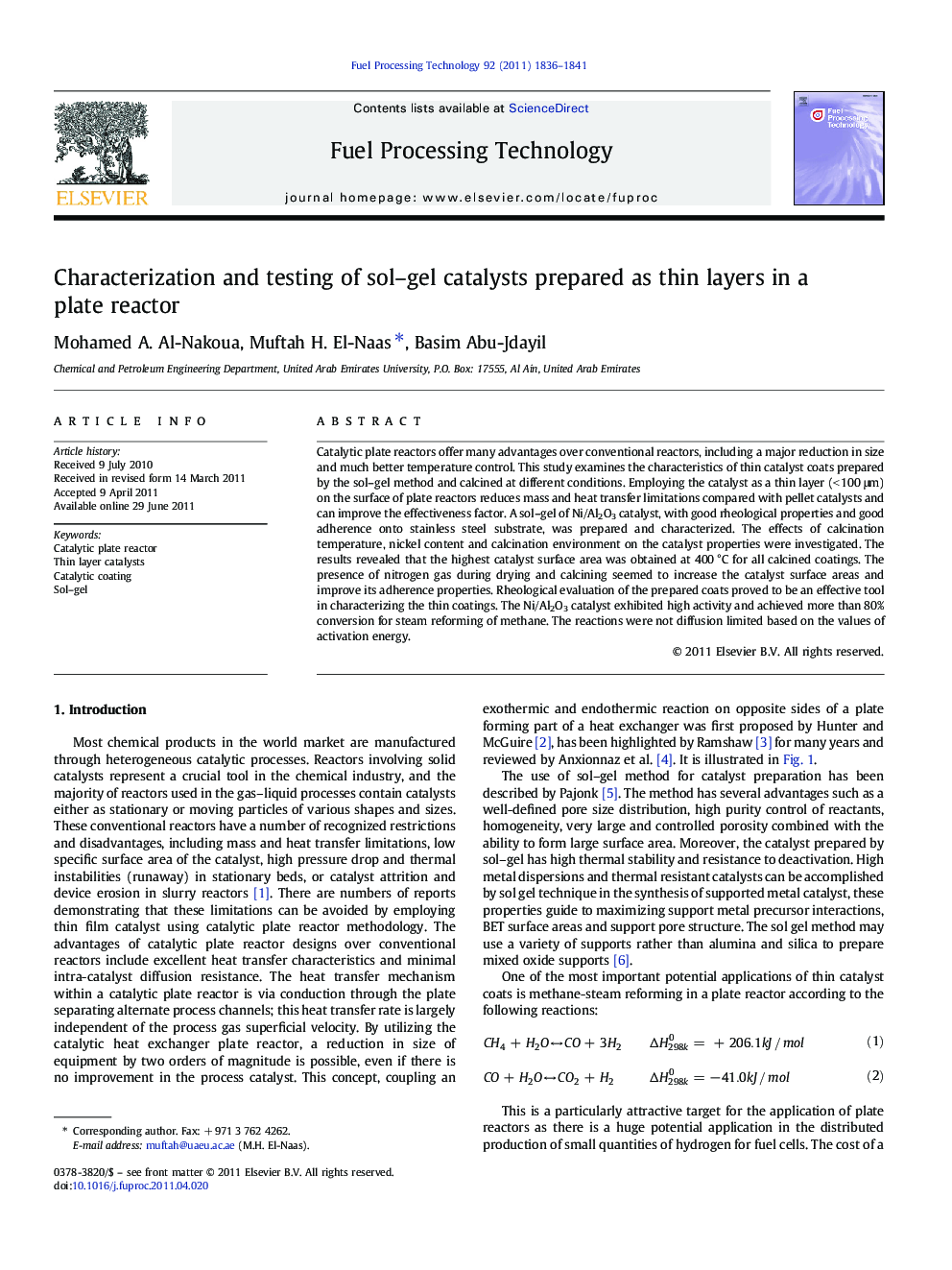| Article ID | Journal | Published Year | Pages | File Type |
|---|---|---|---|---|
| 210561 | Fuel Processing Technology | 2011 | 6 Pages |
Catalytic plate reactors offer many advantages over conventional reactors, including a major reduction in size and much better temperature control. This study examines the characteristics of thin catalyst coats prepared by the sol–gel method and calcined at different conditions. Employing the catalyst as a thin layer (< 100 μm) on the surface of plate reactors reduces mass and heat transfer limitations compared with pellet catalysts and can improve the effectiveness factor. A sol–gel of Ni/Al2O3 catalyst, with good rheological properties and good adherence onto stainless steel substrate, was prepared and characterized. The effects of calcination temperature, nickel content and calcination environment on the catalyst properties were investigated. The results revealed that the highest catalyst surface area was obtained at 400 °C for all calcined coatings. The presence of nitrogen gas during drying and calcining seemed to increase the catalyst surface areas and improve its adherence properties. Rheological evaluation of the prepared coats proved to be an effective tool in characterizing the thin coatings. The Ni/Al2O3 catalyst exhibited high activity and achieved more than 80% conversion for steam reforming of methane. The reactions were not diffusion limited based on the values of activation energy.
Research highlights► Sol-gel method facilitates catalyst preparation with good coating properties. ► The highest surface area of Ni/Al2O3 catalyst was at 400 oC and decreased with the nickel content. ► Nickel/alumina sol-gels showed shear-thinning and noteworthy time-dependent behavior. ► The methane conversion of 50wt% Ni/Al2O3 catalyst was more than 80% at 720 oC. ► Activation energy values indicate that the reaction is free from diffusion limitation effect.
